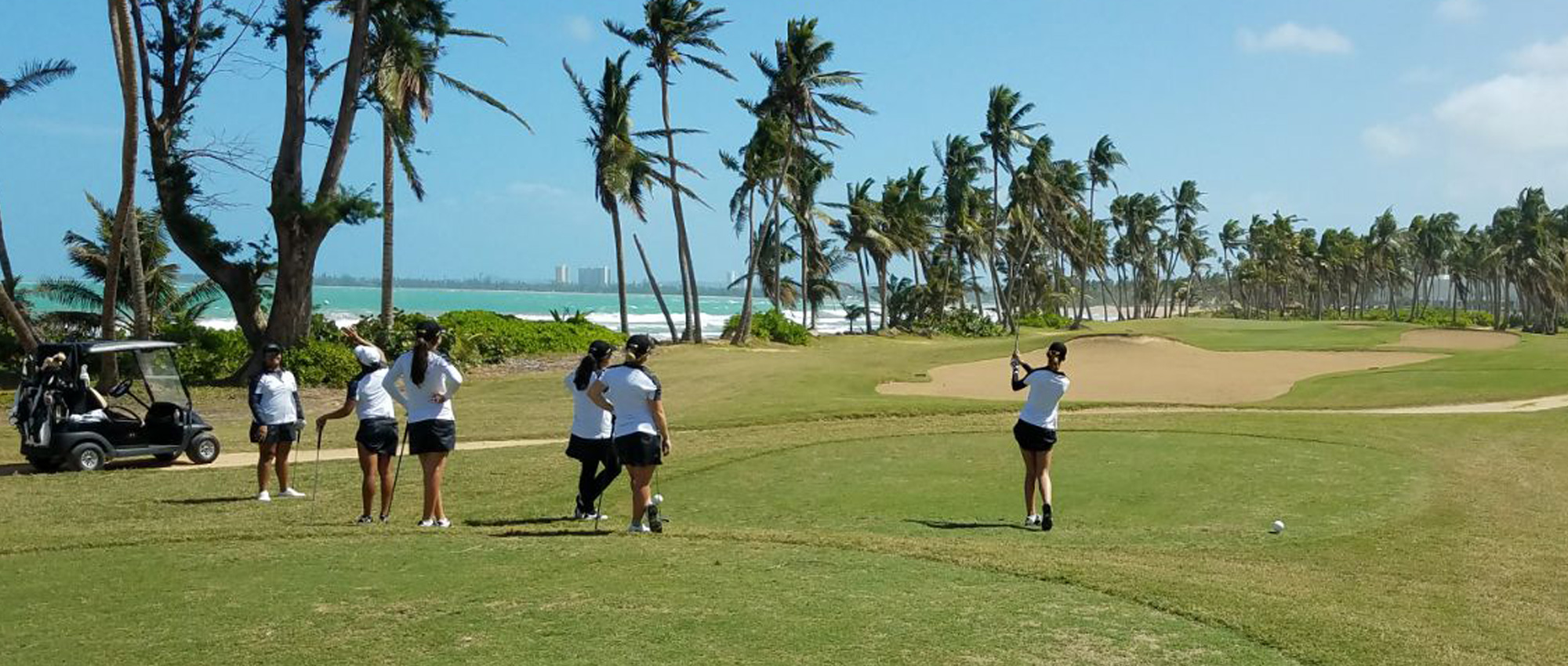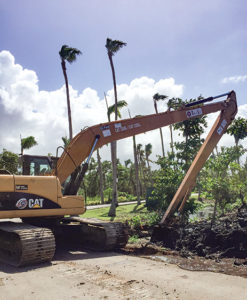
Student Close-Up: When a Golfer Studies the Green

Original photo courtesy of Purdue Athletics Communications.
A Purdue golfer studying turf management and science must have an advantage on the course, right? Senior Marta Martin isn’t so sure. “I don’t think knowing how a plant grows or how they take care of it is going to help you,” she says, explaining that she learned how to read the grain of the green when she was pretty young.
But she’s learned something just as important. “I think it teaches you to value more the facilities you have and all the people working behind the scenes to keep them in such great condition.”
And now she shares those tips with her teammates, sometimes to their dismay. “If you make the divots in a line, the turf grows faster. My teammates want the tee box to be in perfect condition, but how is it going to be in perfect condition if you spread the divots out and don’t even put sand on them? That’s probably the main fight of the season,” she says, laughing.
Martin, who grew up in Madrid, began golfing as a summer activity with her parents when she was 8 years old, and it quickly became her favorite sport. She arrived as a freshman on Purdue’s golf team having never visited campus but thrilled for the opportunity to play in the U.S.

Martin snapped these photos of flooding and ongoing recovery work in the aftermath of Hurricane Maria when the Purdue Women’s Golf team hosted the annual Lady Puerto Rico Classic in Río Grande in February.
“For me, the first thing was to find a school with a good academic program and a good golf program,” says Martin. “Purdue was one of my picks and I was lucky that the coach was interested in me.” Given her love of sports, she first considered studying physiotherapy. But U.S. physiotherapy programs’ courses and length differ from Spain’s, which she worried might hinder her upon returning to Spain. Instead, she considered her family’s history with agriculture in the south of Spain and chose turf management and science in the Department of Horticulture and Landscape Architecture. For her, “It’s all related to golf, both from the science side and the business side.”
Martin recently had an opportunity to see nature’s unexpected effects on the game: the condition of the greens in Puerto Rico, severely damaged by Hurricane Maria six months before the golf team opened its season in February hosting the annual Lady Puerto Rico Classic. The team arrived at night, driving from the capital of San Juan through a landscape lined with downed road signs and without electricity for streetlights. They arrived at the Río Grande resort on the island’s northeast corner, where the tournament is held, to find that recovery there was well underway.
 Damage to bunkers on the resort’s river course forced the tournament to move to a different course, and its carefully manicured condition impressed Martin. But Hurricane Maria’s force was evident just beyond the course. Mountains and landscapes were no longer green and lush. Water and tilted trees filled a woodland area along the course. Evening walks on the beach revealed rainforest damage just outside the resort’s perimeter, and recovery volunteers hauled fallen trees away.
Damage to bunkers on the resort’s river course forced the tournament to move to a different course, and its carefully manicured condition impressed Martin. But Hurricane Maria’s force was evident just beyond the course. Mountains and landscapes were no longer green and lush. Water and tilted trees filled a woodland area along the course. Evening walks on the beach revealed rainforest damage just outside the resort’s perimeter, and recovery volunteers hauled fallen trees away.
Being a student-athlete has given Martin the ability to learn about other cultures and places, but it comes with scheduling complications. Faculty in the College of Agriculture have been supportive, she says. “I’ve had professors who really understand what I’m doing, and they know that I’m willing to work with them to arrange my exams when I’m missing my schoolwork.”

Cale Bigelow, professor of horticulture and landscape architecture and Martin’s academic advisor, is one of her champions. “Among athletes, I think golfers have some of the more grueling schedules in terms of trying to balance the demands of academics and travel for their sport. Marta is a rare person who seems to gracefully balance this life with a huge smile and success both in the classroom and on the course. Purdue and the game of golf are truly lucky to have her as an ambassador.”
Martin appreciates that turf management links the physical maintenance of a course with its day-to-day management. Some things are a given: required products, acreage, local weather, climate and so on. But one thing she learned from Bigelow is that you must also consider budgets and client expectations. “It teaches you that everything depends on the situation. There’s no right or wrong answer.”
Martin’s Purdue Athletics family provided a ready-made community for her at Purdue, and being a student-athlete has taught her resilience. It forces her to examine her strengths and weaknesses, she says, and “It teaches you how, if you work hard, and you work on the right things, no matter what the outcome is, your mind is clear because you know you’ve been working on the right things.”
She plans to stay in the U.S. for a couple of years to work toward her Ladies Professional Golf Association qualification, both to see if she can do it and if she likes that lifestyle. She’s ready, however, for whatever comes next. She loves contact with the environment, as well as relating her studies to what she sees on the course, from grass types to irrigation systems to drainage and seeding.
“Making the connections I have with professors, I can tell that if I need help in the future, I can go back to them and they would be more than happy to help me,” says Martin.